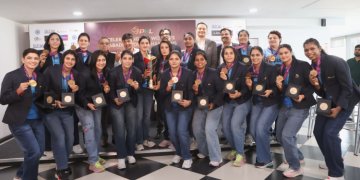When we interacted last year, you spoke of (i) curating content based on audience needs and (ii) catering to a young and urban audience. What insights/research has informed the current content slate? Is the focus still on youth and urban audiences?
On our OTT platform, ZEE5, we do have our core audience as young males and middle-aged males because traditionally we have been an AVOD service. We have a family audience that does come in. There are some genres which cater to both sets of audiences, and there is content consumed by a female audience as well. There is inclusiveness in the content, but it is not a filter which we use for every piece of content we produce. There will be genres which are stories which target the younger audience. There are genres like comedy, rom-com, family dramas, contemporary dramas, which are targeted at family audiences and other sets of audiences. We have content which is watched across all age groups. Though it is primarily geared towards the male audience, it is consumed by the entire family.
For the coming year’s slate, we have 16 shows which are lined up, which have a combination of family dramas and romcoms, which traditionally perform very well in the Telugu market. We have content based on socially relevant issues like honour killings and terrorism. I would say the content slate is family inclusive.
As television is evolving, the TV audience is a little older than earlier. We have observed that the needs of the television audience are very specific in the kinds of narratives they prefer. We will continue to do a lot of deep listening; we do research on a monthly basis. We discuss the content requirements in our focus groups and we receive input on the content requirements of the audience.
The same holds for ZEE5 as well. We do deep research on the content requirements.
At the bottom-line, extra focus is given to the youth audience for the OTT platforms, and women’s orientation is for television.
How has Zee Telugu’s viewership and revenue been impacted through the pandemic? Where are they at, compared to pre-pandemic levels?
The channel has witnessed significant growth when compared to last year. We are back in terms of revenue and viewership.
Zee Telugu has firmly slotted itself in second place among Telugu GECs and is also in the top 10 nationally. Where does it go from here? Is there an aspiration to get to number one? How will you chart that growth?
The aspiration for any number two channel would be to claim the number one position. Our earnest efforts have always been to push our audience likeability quotient higher. Our focus has always been on reaching out to more audiences and staying relevant, which we will continue to do. In terms of content offerings, the team has been making efforts to craft the upcoming stories. Recent content launches will take the channel to the next level, in our understanding. We applied all of the knowledge gained during the research process to the content slate.
Regional language movies are garnering eyeballs nationally and Bahubali, KGF, and RRR are examples. There is also an uptick in regional TV shows being remade in other markets. Within the Zee network, are you witnessing this? Specifically, do you believe there are Telugu shows that can do well in other languages?
Some of our Telugu shows have done well in other languages. There is Muddha Mandaram, which has done well in Tamil as Sembaruthi and as Chembarathi in Malayalam. We have had Varundhini Parinayam, which was remade into Tamil as Poove Poochudava, Gattimela in Kannada, and Pookkalam Varavayi in Malayalam. There are several other shows which have gone across languages.
Paid OTT subscriptions in Telugu and Tamil are said to be growing at a much faster clip than in Hindi. For ZEE5, 50pc of overall viewership is from regional languages—20 pc is from Telugu. Does such OTT growth impact linear television? If so, will we see the impact in the South first?
The audience chooses the mode of viewing based on their requirements. I don’t think television will see a decline because of the growth of OTT platforms. The needs of the viewers, the way they want to watch, and the kind of content they want to watch may vary. Across the globe, we have witnessed a surge in television viewership. There will be a set of viewers who will be migrating to OTT platforms because there is content need which might not have been addressed by television or cinema. I don’t think TV is ever going to fade out – there is a huge segment that continues to watch TV even now.

















